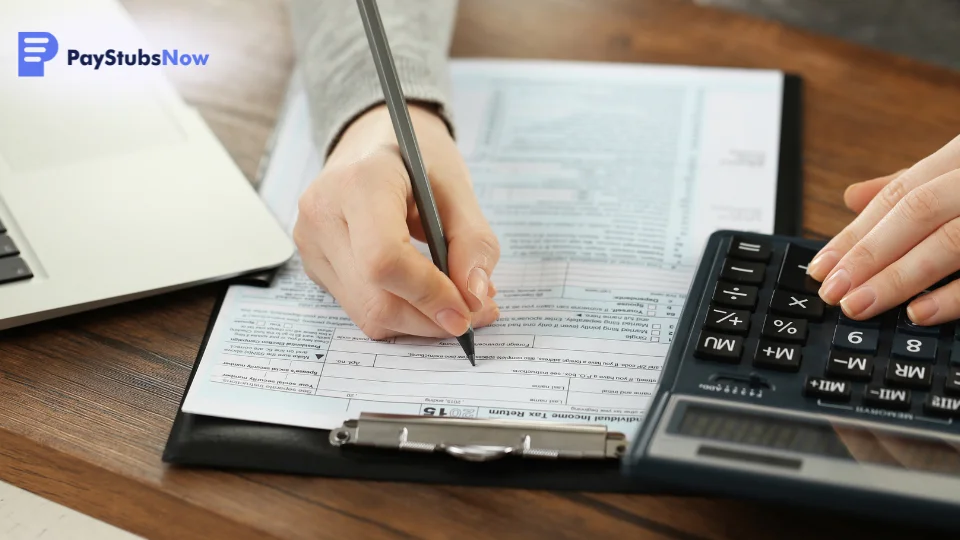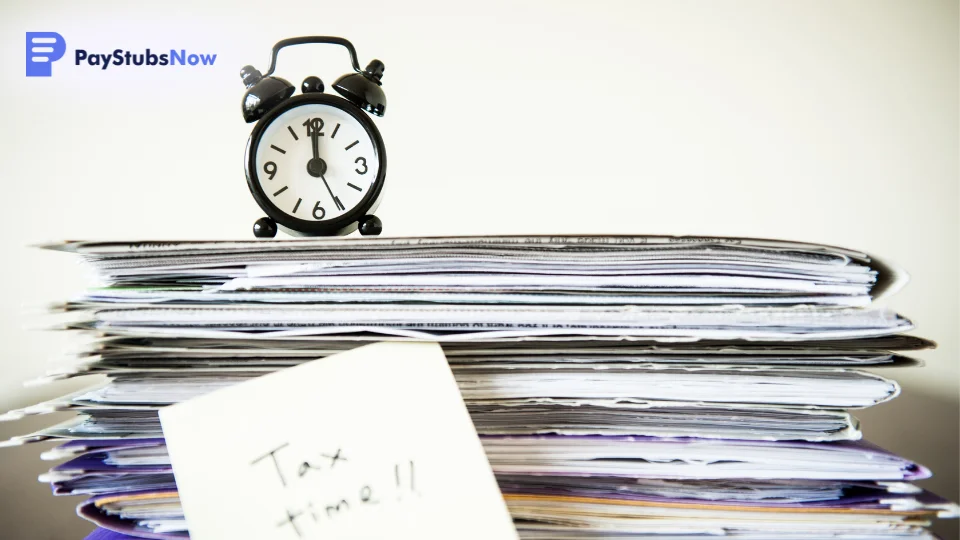


When you work with freelancers, contractors, or vendors, tax season brings one big question: Do I need to send them a 1099? If you're paying anyone outside your payroll, the IRS expects you to report it—accurately and on time.
In this guide, we’ll break down what a 1099 form is, who needs to issue one, the different types to know, and how to send them without the stress. Whether you’re filing for the first time or cleaning up a messy process, this article will walk you through everything you need to know to stay compliant and avoid costly mistakes.

A 1099 form is an IRS tax document used by both small businesses and large corporations to report various types of payments made to non-employees. From the perspective of your business as a payer, these forms serve as official documentation of income paid to independent contractors, freelancers, and other service providers who are not on your payroll.
By issuing 1099 forms, you are fulfilling your responsibility to inform the Internal Revenue Service (IRS) about these payments, contributing to a transparent and accurate tax system. This allows the IRS to track income earned outside of traditional employment.
Note: For recipients of 1099 forms, it's important to understand that, unlike traditional employment—where there is typically federal income tax withheld from each paycheck—1099 income does not include automatic tax withholding. This means individuals are responsible for knowing their tax obligations and making estimated payments throughout the year.
A variety of 1099 forms exist to cater to different financial scenarios. Here’s an overview of the most common types:
This is the primary form you'll use to report payments made to independent contractors who have provided services to your business. This includes fees, commissions, prizes, and other forms of compensation for work performed by non-employees. If you've engaged a freelancer, consultant, or any other independent worker and paid them $600 or more during the tax year for their services, Form 1099-NEC is typically the form you will need to issue.
For recipients, the form serves as an income report card, detailing payments received from various clients throughout the year. This form plays a crucial role in accurately calculating business income and self-employment taxes .
Employers use this form for reporting various other types of income payments exceeding $600 that don't fall under the non-employee compensation category. As a payer, you might use a Form 1099 Misc to report payments such as rent you paid for business property, royalty payments, or certain other types of income that aren't directly related to services performed by an independent contractor.
This form is issued by third-party payment networks like PayPal, Stripe, or credit card processors. These entities are required to report payments processed through their platforms that meet certain thresholds. Therefore, if you paid an independent contractor via PayPal or a credit card, you generally do not need to issue a separate 1099-NEC for that same payment.
While the 1099-NEC and 1099-MISC are the workhorses, the IRS offers several other forms catering to specific financial scenarios:
These forms relate to income received by your business or its owners from investments. As a payer to independent contractors, you will likely not issue these forms.
Similar to investment income forms, these forms typically report payments received.
The following forms address specific transaction types.
Remember: This is not an exhaustive list, so always consult the IRS website or a professional for legal or tax advice about the specifics relevant to your business. Selecting the correct form can help ensure accurate tax reporting.
 Not everyone who works with your business needs a 1099 form. Here’s a breakdown of whom you may need to issue a 1099 to, particularly when you have made payments of $600 or more in a tax year for non-employee services:
Not everyone who works with your business needs a 1099 form. Here’s a breakdown of whom you may need to issue a 1099 to, particularly when you have made payments of $600 or more in a tax year for non-employee services:
If you’re a business owner, you’re generally required to send a 1099 form to anyone you’ve paid $600 or more in a calendar year for non-employee services. This reporting is part of your IRS obligation to ensure income paid outside of payroll is properly documented.
You're responsible for issuing 1099 forms when:
However, there are some common exceptions where you are generally not required to file a 1099 form, even if the payment exceeds $600. These include payments made to:
Navigating the world of 1099s doesn't have to be a tax-season terror! Take a deep breath and follow this simple guide to ensure accurate filing and stress-free compliance. Remember, you've got this!
Before you begin working with an independent contractor or non-employee service provider, have them complete and return Form W-9, Request for Taxpayer Identification Number and Certification. This form provides you with their crucial information, including their name, address, and Taxpayer Identification Number (TIN), which could be their Social Security number (SSN) or Employer Identification Number (EIN) for issuing the 1099.
Identify the type of payment you made and select the corresponding 1099 form. For example, if you paid a freelancer for their services, Form 1099-NEC is usually your go-to. If you're unsure which form to choose, the IRS website offers a wealth of guidance and resources. Or, for extra peace of mind, consult a tax professional who can point you in the right direction.
Gather the recipient's full name, Taxpayer Identification Number (TIN), and the exact amount of payments made during the year. Pay close attention to the specific boxes and fields on the form, ensuring you enter data in the correct format. Before sending the forms out into the world, double-check everything for any typos or errors.
Distribute copies of the completed forms to the recipients by January 31st so they have the information they need to file their taxes accurately. Then, to avoid the dreaded late filing penalties, electronically file a copy of each 1099 form with the IRS by March 31st. Electronic filing is often the most efficient and secure way to go.
Keep copies of all issued forms for your business records, as they're essential for your own tax returns and to support any potential IRS audits. Store these forms securely, whether physically or digitally, to protect sensitive information and adhere to data privacy regulations. Having easy access to these records can simplify tax preparation and help you resolve any questions that may arise.
Now, let's briefly understand the relationship between 1099 forms with other key tax forms that business owners use:
 As a small business owner, it's critical to be aware of the deadlines for issuing 1099 forms to your recipients. The key deadline to remember is January 31st. By this date, you must have provided the completed 1099 forms to all independent contractors and other non-employees you paid $600 or more during the previous tax year.
As a small business owner, it's critical to be aware of the deadlines for issuing 1099 forms to your recipients. The key deadline to remember is January 31st. By this date, you must have provided the completed 1099 forms to all independent contractors and other non-employees you paid $600 or more during the previous tax year.
Failing to issue these forms can result in substantial penalties. If forms are issued within 30 days of the deadline, you may incur a lower penalty. However, if you delay beyond 30 days or fail to issue the forms altogether, you face increasing penalties for non-filing, which can negatively impact your business finances and reputation.
 Issuing 1099 forms can be straightforward, but there are common errors that can lead to complications during tax season. Being aware of these pitfalls can help ensure accurate reporting and compliance:
Issuing 1099 forms can be straightforward, but there are common errors that can lead to complications during tax season. Being aware of these pitfalls can help ensure accurate reporting and compliance:
One of the most critical errors is failing to provide the completed 1099 forms to your independent contractors and other non-employees by the January 31st deadline. This can result in IRS penalties and create difficulties for your recipients in filing their own tax returns accurately and on time.
Selecting the incorrect 1099 form for the type of payment made is another common mistake. For instance, using Form 1099-MISC for non-employee compensation that should be reported on Form 1099-NEC can lead to reporting errors and potential discrepancies with IRS records.
Failing to obtain a completed Form W-9 from your independent contractors before issuing payments is a significant oversight. The W-9 provides essential information like the contractor's Taxpayer Identification Number (TIN) and correct legal name, which are crucial for accurate 1099 preparation.
Even with a W-9, errors can occur when transcribing the information onto the 1099 form. Incorrect names, addresses, or, most critically, Taxpayer Identification Numbers (TINs) can lead to IRS notices and processing delays for both your business and the recipient.
It's important to remember that the $600 reporting threshold is cumulative for the entire tax year. Overlooking several smaller payments to the same contractor that collectively exceed $600 is a common mistake that can result in underreporting.
Maintaining thorough records of all payments made to independent contractors and other non-employees throughout the year is essential. Without accurate payment records, it becomes challenging to complete 1099 forms correctly and reconcile your business expenses during tax season.
As a business owner, you know how important it is to get your 1099 forms right, and it can be a nightmare to fill out all the paperwork manually, not to mention making mistakes! Paystubsnow is here to make things easy with a streamlined solution designed to simplify this crucial task, enabling you to issue 1099 forms accurately and efficiently without the burden of manual data juggling.
Understanding the nuances of 1099 forms, from identifying the correct type and who needs one to adhering to critical deadlines and avoiding common errors, is paramount for every business owner. Accurate and timely 1099 issuance ensures compliance with IRS regulations and fosters positive relationships with your independent contractors.
For a streamlined and stress-free approach to 1099 filing, consider using Paystubsnow. Our platform simplifies the entire process, from effortless form creation and automatic calculations to built-in compliance checks and flexible delivery options, so you don't get bogged down in these tasks.
Reclaim your time and ensure accuracy with Paystubsnow—starting today - Generate Form 1099